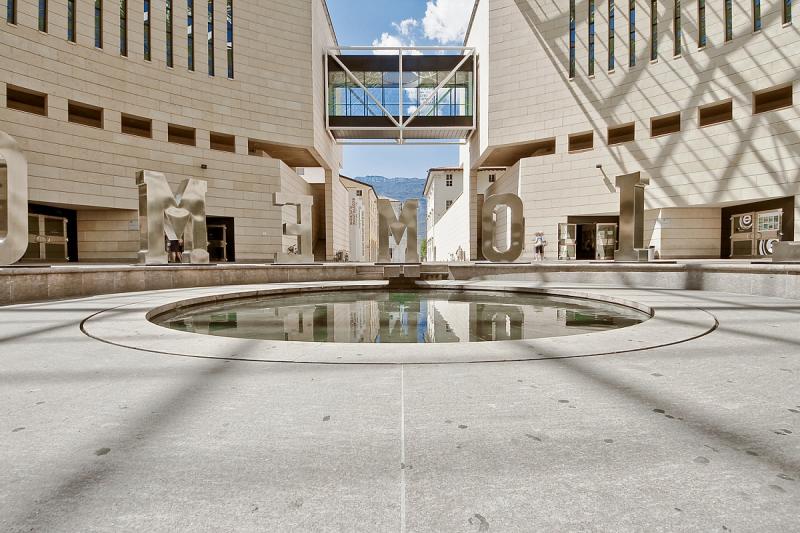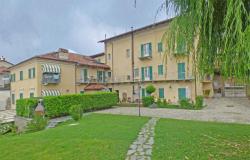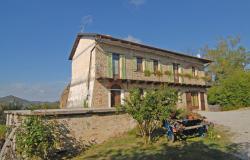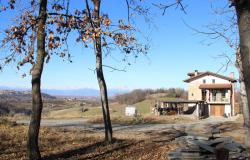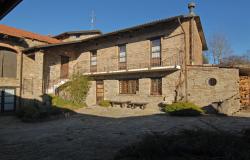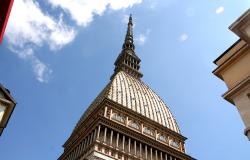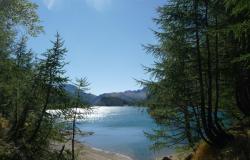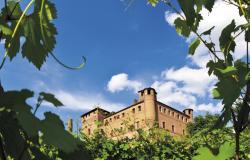With Italy’s fourth Contemporary Art Day fast approaching, we have selected three museums you should not miss: Turin’s Castello di Rivoli, Prato’s Centro Pecci and Rovereto’s MART
Botticelli’s Venus, a cascade of strawberry blonde hair enveloping her sinuous curves in a silky embrace; God’s muscular, powerful arm stretched to infuse life into a languid Adam in Michelangelo’s Sistine Chapel fresco; Repahel’s soft, plump, heart-lipped Galatea, scantily clad in red, gazing towards a cerulean heaven as she rides on a dolphin-drawn chariot. These are the kind of images that spring to mind when you think of Italian art—the concept itself is indissolubly linked to the Renaissance and its masters.
But Italy also has some extraordinary modern and contemporary art collections tucked away in little known museums throughout the country which are well worth discovering. The capital of modern and contemporary art is perhaps Turin, which has no less than four museums devoted to it—Galleria d’Arte Moderna, Castello di Rivoli, Fondazione Sandretto Re Rebaudengo, Fondazione Mario Merz—as well as an art fair, Artissima, and an annual outdoor show, Luci d´Artista. But there are museums in Rome (MAXXI, www.darc.beniculturali.it, and MACRO, en.macro.roma.museum), Milan (PAC, www.comune.milano.it/pac), Trento (Galleria Civica, www.workartonline.net), Bergamo (GAMEC, www.gamec.it), Naples (MADRE, www.museomadre.it, and PAN, www.palazzoartinapoli.net), Siena (SMS Contemporanea, www.papesse.org), Pesaro (Centro Arti Visive Pescheria, www.centroartivisivepescheria.it), La Spezia (CAMec, http://camec.spezianet.it), Siracusa (Galleria Civica d’Arte Contemporanea Montevergini, www.montevergini.com), Modena (Galleria Civica, www.galleriacivicadimodena.it), Bologna (MAMbo, www.mambo-bologna.org), Prato (Centro per l’Arte Contemporanea Luigi Pecci, www.centropecci.it) and even in smaller towns such as Rovereto (MART, www.mart.tn.it), Monfalcone (Galleria Comunale d’Arte Contemporanea di Monfalcone) and Gallarate (Civica Galleria d'Arte Moderna, www.gam.gallarate.va.it).
To mark the importance of contemporary art in Italian culture, the Associazione dei Musei d’Arte Contemporanea Italiani, an association linking 24 of the country’s most important contemporary art museums, organises an annual Contemporary Art Day, which, this year, will take place on Saturday October 4. The day has a full programme of events, conferences and exhibitions to satisfy any contemporary art appetite, including a guided tour to the solitude-themed at Turin’s Castello di Rivoli and a visit to a bold, colourful chapel created b Sol LeWitt and David Tremblett in the heart of a Barolo vineyard, Ceretto.
If you can’t make it to Italy on that day, or if you’d rather take your time visiting just one museum than cramming many activities in twenty-four hours, here are three of the best modern and contemporary art museums you should not miss.
Castello di Rivoli, Rivoli, near Turin
 The brick-red bulk of Castello di Rivoli crowns, monumental and unfinished, a steep hill just outside Turin. Hit by tight budgets, the Napoleonic wars and WWII fire bombs, the grand Baroque castle that should have rivalled Versailles—at least in the plans of its owner, Duke Vittorio Amedeo II, and architect, Filippo Juvarra—turned into a broken dream which housed cattle where lords should have slept. Until 1978, when, with rare insight, the Regione Piemonte converted it into an exhibition venue for contemporary art and, later, into a permanent collection. Today, it is home to Mario Merz’s tubular Igloo, painted with a disquieting canvas that symbolises power; to Sol LeWitt’s heptagonal Panels and Tower with colours and scribbles, soaring golden amid gloomy wall panels; and to Candice Breitz’s Soliloquy Trilogy, a set of three short films where the lead character obsessively repeats some words or sounds. The works are fascinating, shocking, sometimes horrifying, of their own accord. But seeing them among the marbles, stuccoes and frescoes of the 18th century building adds a contrasting dimension that makes a trip to Rivoli intriguing and unforgettable.
The brick-red bulk of Castello di Rivoli crowns, monumental and unfinished, a steep hill just outside Turin. Hit by tight budgets, the Napoleonic wars and WWII fire bombs, the grand Baroque castle that should have rivalled Versailles—at least in the plans of its owner, Duke Vittorio Amedeo II, and architect, Filippo Juvarra—turned into a broken dream which housed cattle where lords should have slept. Until 1978, when, with rare insight, the Regione Piemonte converted it into an exhibition venue for contemporary art and, later, into a permanent collection. Today, it is home to Mario Merz’s tubular Igloo, painted with a disquieting canvas that symbolises power; to Sol LeWitt’s heptagonal Panels and Tower with colours and scribbles, soaring golden amid gloomy wall panels; and to Candice Breitz’s Soliloquy Trilogy, a set of three short films where the lead character obsessively repeats some words or sounds. The works are fascinating, shocking, sometimes horrifying, of their own accord. But seeing them among the marbles, stuccoes and frescoes of the 18th century building adds a contrasting dimension that makes a trip to Rivoli intriguing and unforgettable.
Castello di Rivoli in Piazza Mafalda di Savoia, Rivoli, is open Tuesday to Thursday 10 am- 5pm and
Friday to Sunday 10am.- 9pm. Admissions costs €6.50, with concessions available for children aged 11-14, senior citizens, teachers, students, the disabled, military personnel, cultural associations and other organizations.
Free admission to children under 11. For more information call +39.011.9565.222 or visit www.castellodirivoli.org
Centro per l’Arte Contemporanea Luigi Pecci, Prato
 The Centro per l’Arte Contemporanea Luigi Pecci is the lasting tribute a father built to the memory of his son. Textile entrepreneur Enrico Pecci wanted to present the city of Prato with a lively cultural institution that would celebrate the life of his late son Luigi, who passed away at a young age. In 1978, he came up with the idea of a contemporary art centre and, once the city agreed to the project two years later, he called upon rationalist architect Italo Gamberini to design it. Gamberini’s low, shed-roofed building is interesting in its own right, but the eye is quickly drawn to the installations that pepper the gardens around the centre. Conceived as an open-air museum, the grounds are home, among others, to Sol LeWitt’s 994 dirt-white parallelepipeds forming an Irregular Tower, Bizhan Bassiri’s bronze Beast, arching over a travertine rock, the shiny, chunky wheels of Anne and Patrick Poirier’s broken column, Enzo Cucchi’s marble and mosaic fountain or Mauro Staccioli’s soaring half moon, flying like a wind-blown sail over the vivid green lawn. Indoors, the Centro Pecci hosts a series of temporary exhibitions (as well as theatre and video events), which capture the pulse of contemporary art. Opening in November 2008 to February 2009 is Vent’anni Prima, Vent’anni Dopo, a cavalcade through some of the best contemporary artwork produced in twenty years prior to the museum’s opening ad in the twenty years that followed (1968-2008).
The Centro per l’Arte Contemporanea Luigi Pecci is the lasting tribute a father built to the memory of his son. Textile entrepreneur Enrico Pecci wanted to present the city of Prato with a lively cultural institution that would celebrate the life of his late son Luigi, who passed away at a young age. In 1978, he came up with the idea of a contemporary art centre and, once the city agreed to the project two years later, he called upon rationalist architect Italo Gamberini to design it. Gamberini’s low, shed-roofed building is interesting in its own right, but the eye is quickly drawn to the installations that pepper the gardens around the centre. Conceived as an open-air museum, the grounds are home, among others, to Sol LeWitt’s 994 dirt-white parallelepipeds forming an Irregular Tower, Bizhan Bassiri’s bronze Beast, arching over a travertine rock, the shiny, chunky wheels of Anne and Patrick Poirier’s broken column, Enzo Cucchi’s marble and mosaic fountain or Mauro Staccioli’s soaring half moon, flying like a wind-blown sail over the vivid green lawn. Indoors, the Centro Pecci hosts a series of temporary exhibitions (as well as theatre and video events), which capture the pulse of contemporary art. Opening in November 2008 to February 2009 is Vent’anni Prima, Vent’anni Dopo, a cavalcade through some of the best contemporary artwork produced in twenty years prior to the museum’s opening ad in the twenty years that followed (1968-2008).
The Centro per l’Arte Contemporanea Luigi Pecci, in Viale della Repubblica 277, Prato, is open on Monday and from Wednesday to Sunday from 10am to 7pm. Admissions cost €5, concessions €4. Phone prior to visiting because the centre is sometimes closed when setting up new exhibitions.
MART, Rovereto
 Medardo Rosso’s Carne Altrui—the wax head seemingly melting into a sea of golden light—is in itself worth a trip to MART. But the collection, which numbers some 12,000 works, sounds like a Who’s Who of Italian modern and contemporary art. The spare, soothing still lifes of Giacomo Morandi, bottles and boxes stretching white and beige against a pale grey background; Arturo Marini’s Donna Al Sole, the tilted head crowning a powerful body; the bronze-sculpted muscles of Marino Marini’s headless boxer; the yellow splash of a parrot’s feathers topping the pink tutu and rigid legs of a ballerina in Fortunato Depero’s Rotazione di Ballerina e Pappagalli; Massimo Campigli’s perfectly white actresses performing like angels in front of a minuscule crowd; then Carlo Carrà’s portly swimmers, Giorgio De Chirico’s desolate Piazza, Mario Sironi’s somber Natura Morta. And if this weren’t enough, the museum hosts temporary exhibitions—just now, and until January 2009, it is showing Impressionist and post-Impressionist masterpieces from Jerusalem’s Israel Museum. There is so much art at MART to lose one’s head. Just one word of warning: for obvious reasons of space, the museum rotates the items on display from its permanent collection, so if you are after a specific piece, check whether it is on show on www.mart.trento.it.
Medardo Rosso’s Carne Altrui—the wax head seemingly melting into a sea of golden light—is in itself worth a trip to MART. But the collection, which numbers some 12,000 works, sounds like a Who’s Who of Italian modern and contemporary art. The spare, soothing still lifes of Giacomo Morandi, bottles and boxes stretching white and beige against a pale grey background; Arturo Marini’s Donna Al Sole, the tilted head crowning a powerful body; the bronze-sculpted muscles of Marino Marini’s headless boxer; the yellow splash of a parrot’s feathers topping the pink tutu and rigid legs of a ballerina in Fortunato Depero’s Rotazione di Ballerina e Pappagalli; Massimo Campigli’s perfectly white actresses performing like angels in front of a minuscule crowd; then Carlo Carrà’s portly swimmers, Giorgio De Chirico’s desolate Piazza, Mario Sironi’s somber Natura Morta. And if this weren’t enough, the museum hosts temporary exhibitions—just now, and until January 2009, it is showing Impressionist and post-Impressionist masterpieces from Jerusalem’s Israel Museum. There is so much art at MART to lose one’s head. Just one word of warning: for obvious reasons of space, the museum rotates the items on display from its permanent collection, so if you are after a specific piece, check whether it is on show on www.mart.trento.it.
MART, in corso Bettini 43, Rovereto (but there is also a branch in Trento) is open from 10am to 6pm Tuesday-Thursday and Saturday-Sunday, and from 10am to 9pm on Friday. Admissions cost €10, concessions €7.
For an overview of contemporary art museums in Italy and more information on the Contemporary Art Day, visit AMACI, Associazione dei Musei d’Arte Contemporanea Italiani, on www.amaci.org.
